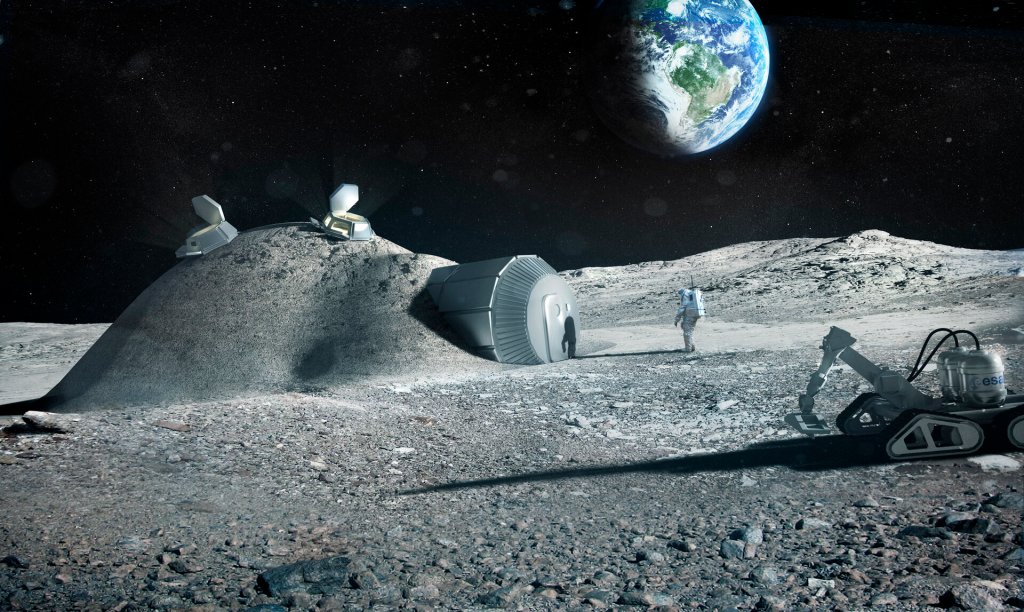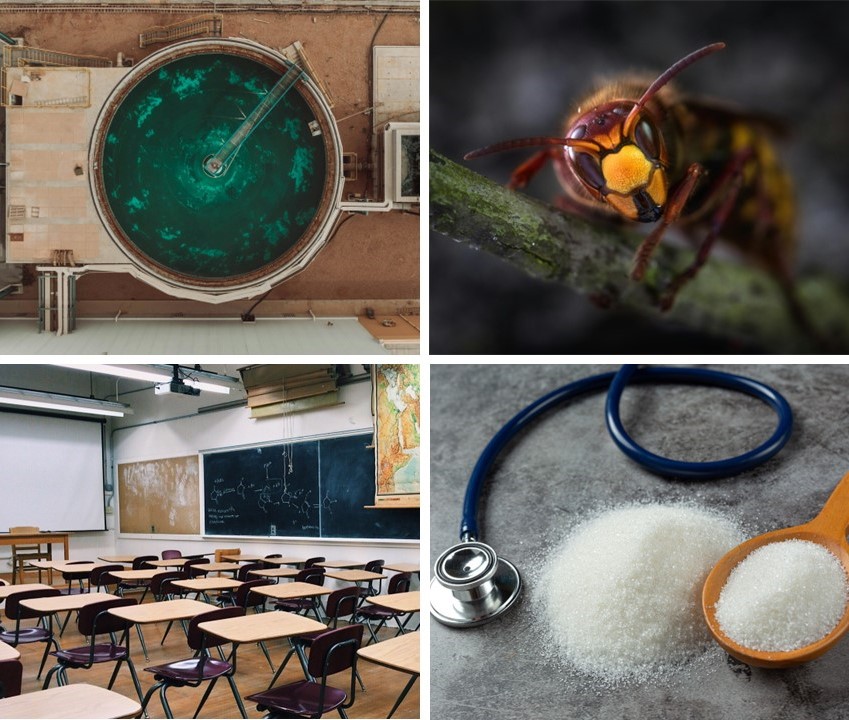Exploring the origins and fate of lunar water
22 March 2021
Luxembourg Institute of Science and Technology (LIST) is collaborating with institutes from Europe and abroad, for a more robust interpretation of lunar ‘soil’ analyses from samples beneath the surface in the South Pole region of the Moon. They are looking at how water ice molecules behave when changing from ice state to vapour state.
“That’s one small step for a man, one giant leap for mankind”.
This famous quote from Neil Armstrong, who in the late 1960s was the first man to walk on the Moon, has profoundly marked our history and knowledge. These first manned Apollo missions, however, led scientists to believe that the Moon was a bone-dry celestial body. It is only very recently that new exploration missions have revealed the existence of water ice pools in the polar regions of the Moon.
At the dawn of space mining missions, this discovery opens new horizons and raises new research questions, to which Veneranda López Días, researcher at LIST (Environmental Research and Innovation Department/ERIN), together with her colleagues at the ERIN and Materials Research and Technology departments, are trying to answer through pioneering projects with the European Space Agency (ESA) and the Luxembourg Space Agency (LSA).

Setting up a future lunar base could be made much simpler by using a 3D printer to build it from local materials. ©ESA/Foster + Partners
From a better understanding of lunar water behaviour…
In non-terrestrial environments, such as the Moon, only little is known about the water molecule’s behaviour. This information is nonetheless essential for a better understanding of lunar water sources and fate, and by extension, to identify if it could be a viable resource.
For filling pressing knowledge gaps on lunar water behaviour, Laurent Pfister, head of the ENVISION unit at LIST (ERIN), is leading an interdisciplinary team composed of experts in mass spectrometry from MRT and isotope hydrologists from ERIN. They contribute to ESA’s ambitious PROSPECT mission (Package for Resource Observation and in-Situ Prospecting for Exploration, Commercial exploitation and Transportation).
“In the frame of the Luna 27 mission that will be launched in 2024/2025, we are collaborating with institutes from Europe and abroad, for a more robust interpretation of lunar ‘soil’ analyses from samples beneath the surface in the South Pole region of the Moon.”, explains Veneranda.
More specifically, and with the support of LSA, the LIST team conducts a pioneering project focusing on the isotope fractionation processes of Hydrogen (H) and Oxygen (O) stable isotopes during water ice sublimation under lunar environmental conditions. In other words, they are looking at how water ice molecules behave when changing from ice state to vapour state.
As a concrete example of application, the Permanently Shadowed Regions (PSRs) at the Moon poles act as cold traps, with temperatures down to -250°C, and collect any vapours that pass through the lunar environment. Hence, PSRs contain a fossil record of the early Solar System that could considerably improve the current state-of-the-art related to the lunar water cycle and the early solar system history.
… to space mining missions on the moon and beyond
“Progress in this respect will be of direct relevance and interest for space mining companies and scientists investigating the water cycle on the Moon and the origin of water delivered to the Earth-Moon system and its history.”, highlights Veneranda.
Water extraction and processing on the Moon is highly relevant for In-Situ Resource Utilisation (ISRU), since it serves as propelling, radiation shielding, thermal management and life-support consumables. It would therefore contribute to reduce the costs and complexity of bringing supplies from the Earth’s deep gravity well and settle the human presence on the Moon (Moon Village) as an intermediate base to prepare for future missions to Mars – or other destinations – but also to extend the space mining to asteroids.
Moreover, lessons learned from this project may eventually benefit water resources related research on earth. The expected findings and results shall help identifying synergies between terrestrial and non-terrestrial hydrology, for ultimately triggering new momentum in both planetary and Earth system sciences.
The interdisciplinarity of LIST as an asset
“Given that we explore mostly unploughed ground – both in terms of instrument development and exo-hydrological process understanding – this project is extremely challenging, but also all the more exciting.”, testify Laurent and Veneranda.
LIST’s researchers need to find innovative solutions to untackled problems related to the extraction of water and ice from lunar ‘soil’ samples. At the same time, they need to design and build devices that operate in an incredibly hostile and challenging environment – with very low temperatures and a very pronounced vacuum – and still capable of delivering the finest possible resolution in stable isotope measurements for O and H in ice. The new instruments, experimental data and process knowledge obtained from exo-hydrology research shall ultimately also reduce knowledge gaps that prevail in terrestrial hydrology – a field that remains measurement limited to date.
With its cohort of experts in multiple and yet highly complementary fields – spanning from hydrology, inorganic geochemistry, soil science, chemistry to physics – LIST offers a unique blend of qualities and skills that are required for facing such an extraordinary and galvanising challenge.
- Discover all LIST’s projects related to water management
- Learn more on LIST’s research group on Catchment and Eco-Hidrology
This article was originally published by the LIST








